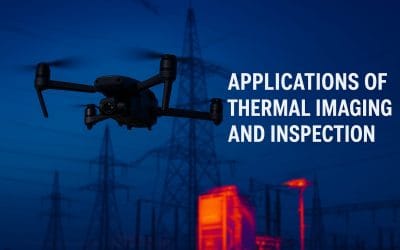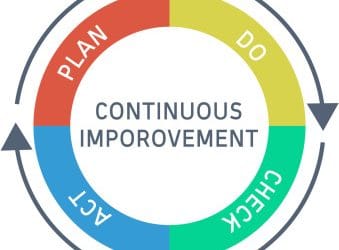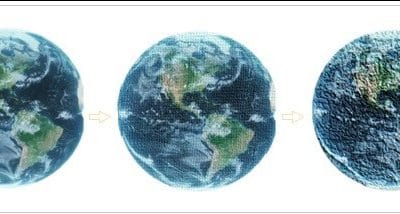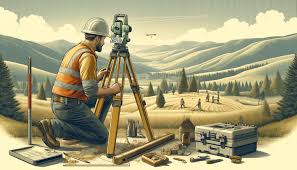Mapping With Laser Precision Using LiDAR Technology
Mapping With Laser Precision Using LiDAR Technology
Lidar — Light Detection and Ranging — is a remote sensing method used to examine the surface of the Earth.
Lidar, which stands for Light Detection and Ranging, is a remote sensing method that uses light in the form of a pulsed laser to measure ranges (variable distances) to the Earth. These light pulses—combined with other data recorded by the airborne system — generate precise, three-dimensional information about the shape of the Earth and its surface characteristics.
A LIDAR instrument principally consists of a laser, a scanner, and a specialized GPS receiver. Airplanes and helicopters are the most commonly used platforms for acquiring LIDAR data over broad areas. Two types of LIDAR are topographic and bathymetric. Topographic LIDAR typically uses a near-infrared laser to map the land, while bathymetric LIDAR uses water-penetrating green light to also measure seafloor and riverbed elevations.
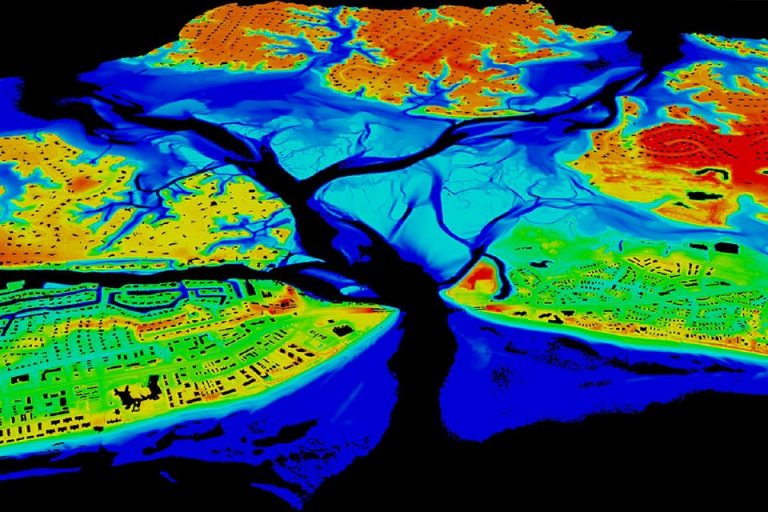
A LIDAR map of Lynn Haven Inlet, Virginia.
Lidar systems allow scientists and mapping professionals to examine both natural and manmade environments with accuracy, precision, and flexibility. NOAA scientists are using LIDAR to produce more accurate shoreline maps, make digital elevation models for use in geographic information systems, assist in emergency response operations, and in many other applications.
Lidar data sets for many coastal areas can be downloaded from the Office for Coastal Management Digital Coast web portal.
LiDAR has various applications in surveying, sensors, drones, and laser scanning. So people are fairly acquainted with this technology, which is among the major emerging technologies driving the age of automation.
But there are many different types of LIDARs based on their functionality and inherent characteristics. Let’s have a look at the classification of LIDARs and how different types of LIDARs have different uses.
Based on functionality
Airborne

As the name suggests, Airborne LiDARs are mounted on top of a helicopter or drone. The light is first emitted towards the ground and then it moves towards the sensor. Airborne LiDAR is further classified into topographic and bathymetric.
Topographic LiDAR
It is used mainly in monitoring and mapping the topography of a region. So it has applications in geomorphology, urban planning, landscape ecology, coastal engineering, survey assessment, etc.
Bathymetric LiDAR

Bathymetric LiDARs are used in measuring the depth of water bodies. In a bathymetric LiDAR survey, the infrared light is reflected back to the aircraft from the land and water surface, while the additional green laser travels through the water column. Bathymetric information is crucial near coastlines, in harbors, and near shores and banks. Bathymetric information is also used to locate objects on the ocean floor.
Terrestrial LiDAR
Terrestrial LIDAR can be installed either on a tripod or on a moving vehicle. It collects data points that help in the highly-accurate identification of data. This has its application in surveying and creating 3D Modelling. Terrestrial LiDAR can be either Mobile or Static
Mobile: It is mostly used to analyze infrastructure and observe roads. Mobile LiDAR systems mostly include sensors, cameras, and GPS.
Static: Static LiDAR is more portable, and handy to use. It collects cloud points from a fixed location and is used in mining and archaeology.
Based on other classifications
DIAL:
DIAL is an acronym for Differential Absorption LiDAR sensing of ozone. It is mostly used to measure Ozone in the lower atmosphere.
Raman LIDAR

It is used for profiling water vapor and aerosol
Wind LiDAR: Wind LIDAR is used to measure wind speed and direction with high accuracy Wind data has been conventionally gathered with great difficulty due to multiple measurement points leading to inaccuracies. Using LiDAR one can measure wind speed, direction as well as turbulence
Spaceborne LiDAR
The potential of LiDAR extends beyond the earth as well. Premier space agencies including NASA are using LiDAR in detection and tracking.
HSRL LiDAR

The NASA airborne High Spectral Resolution LiDAR (HSRL) is used to characterize clouds and small particles in the atmosphere, called aerosols. From an airborne platform, the HSRL scientist team analyses the aerosol size, composition, distribution, and movement.
The HSRL instrument is an innovative technology that is similar to radar; however, in the case of LiDAR, radio waves are replaced with laser light.
The HSRL technique utilizes the spectral distribution of the LiDAR return signal to discriminate aerosol and molecular signals and thereby measure aerosol extinction and backscatter independently.





























































































